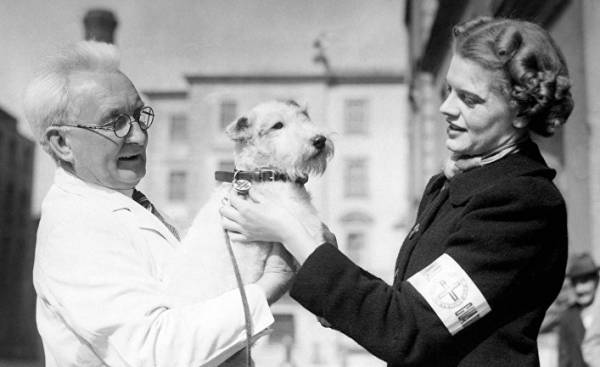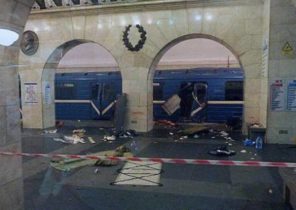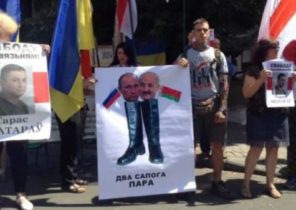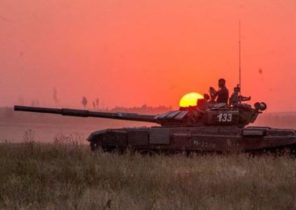
In the first week of the Second world war in London killed hundreds of thousands of dogs and cats, they were asked to kill their hosts. Out of love.
Hundreds of citizens stood, neatly lined up in front of the animal shelter North London. With them, waited for dogs and cats. Animal life here came to an end.
People brought their Pets to kill them.
Throughout the city these days was dying Pets. Veterinary clinics and animal shelters were occupied by unprecedented job of destroying. Large enterprises organized a night shift, because otherwise could not cope with the work.
It happened in September 1939, in the first weeks of the Second world war. At least 400 thousand dogs and cats have fallen then the victims of violence in London — a quarter of all Pets.
Union for the protection of dogs NCDL used to lull chloroform; the ushers had to kill the dogs shocks. Soon the company no longer knew what to do with the corpses. Most were related to a large sanatorium for animals, who in this difficult time suggested for this purpose a lug on its territory.
Today there is not even a commemorative tablets, which would be reminded of the mass grave. Probably, this episode is not good for self image of the British: a splash of collective hysteria in the country, consider themselves to be loving animals.
Themselves for the slaughter began more or less spontaneously, without convincing reasons. This confirms British historian Hilda Kean (Hilda Kean). In her last book she tries to figure out what could lead to the slaughter of domestic animals. (*).
The society for the protection of animals RSPCA, to whom she turned for information to investigate, at first said that has no clue about that and what about the mass destruction of animals in the beginning of the war is unknown. However, even then all the major daily Newspapers picked up the theme of the slaughter, some of them were critical. Society itself RSPCA described in detail the amount of shares in the statement of activities during the war years. Animal advocates even in advance, in anticipation of air attacks, restock of chloroform and ammunition. When the war began to demand more and more casualties, the fate of the animals was forgotten.
Keane gathered a variety of material, not only official documents and newspaper ads, but also personal diaries and letters of people.
Conclusion kin: the everyday life of the British almost did not show panic. Products not yet rationed, and his animals as before, there is enough meat of sick horses. Also, there was no immediate danger to life and health; air attacks on London began in the summer of 1940.
Obviously, the owners liquidated their animals just as a precaution, due to the vague fear of what might happen.
Undoubtedly, just helpless anticipation of war was exhausting. And so the government encouraged actively to prepare for it. The townspeople listened. “They sent children out of the city, sewed curtains to cover the window, and dug up their garden beds for growing vegetables, writes Keane. And killed their Pets.”
No indication for this was not. And the position of the authorities at first were mixed. The official guide recommended that those who will not be able to take care of the safety of their animals, to consider the possibility of euthanasia. On the other hand, soon the government had to worry about food and shelter for the survivors of the household.
Clear instructions in the beginning of the war, the author believes, could save many a quadruped. Experts in the government, obviously, didn’t think that Pets in the cities have already received the new feature. They no longer prudent to be evaluated, as once farm animals, given their amount of meat, eggs or milk. Also on watchdog and hunting services, they were mainly released. Now they just lived with humans and have become beloved family members.
With the changes came and unusual care: what to do if the dog panics during air RAID? If she’s not in the shelter? If a cat gets under a gas attack?
Many pet owners shudder, imagining how their wards will have starved to wander through the bombed-out neighborhoods. In addition it was impossible to exclude that the Nazi forces are about to take over the island. For the first time since 1688 threatened invasion of the enemy.
In this situation, some citizens even thought to kill their own children to save them from this horror. New was the fact that four-legged creatures able to cause a similar sense of compassion.
Historian kin found many examples of empathic relationships to Pets. So black-and-white cat, a foundling Lulu had to die because his master considered intolerable to expose an animal to the dangers of war or to give it in wrong hands — too deep was the connection between them. Death Lulu left, as she assured the man, “unspeakably deep sense of loss and grief.”
In the end a mercy killing among human children is not practiced in reality, but among animals — everywhere. They, as it turned out, was just unlucky: they, almost human, caused deep compassion. But there was still animals in a dubious case, they could be killed.
A small disadvantage could be critical. White rabbit Minnie lived in the prosperous economy; both the master’s daughter took him for a walk in the stroller for dolls. When the family from fear of the bomb moved to the sea, Minnie is the take was impossible. Their friend shot the animal, and the rabbit is back on the table in the form of pate. Daughter Alison was a bit shocked, but then willingly put his meat Minnie: “If someone needs to eat, it is better then we”.
But in the spring of 1940, it seems that many pet owners have begun to suffer from remorse. Contemporaries spoke of the “Holocaust” — from the Greek words for animal sacrifice. To refer to murder and persecution of Jews, the term began to be used only in 1942.
In the subsequent war years, the fate of the surviving animals took an unexpected turn. In letters and newspaper articles of people wrote touching as stood a difficult time together with their Pets. Shared everything and the food, when it was not enough. Sometimes starving people shamefully ate a low-grade horsemeat, sometimes remaining piece of delicious filet was given to the pet. Often for food for animals people stood as long as for own products.
Although feed cats milk were forbidden — according to official estimates, these gourmet drink up to 80 million litres of milk a year. But the ban existed only on paper. The authorities probably fair to assume that this is not feasible in the General population. In addition, they praised the Patriotic service of cats to fight against rats and mice.
Dogs, in turn, was useful during searches for victims of the bombing. In London went to a story about the dog the Spot that within 12 hours trying to dig up buried debris family of the owners — unfortunately, in vain, were all dead. Completely emaciated dog was in the veterinary clinic, where he treated a bleeding paw.
First of all, animals are helped by their cheerful disposition, they are uplifting and morale — even, and especially, the smallest.
Local fame got Sparrow Clarence. He was saved by a widow who helped the air defense forces. She Clarence learned some tricks. He played tug of war with the pin, and the word “siren,” he snorted in a tiny shelter.
Clarence was there when the widow was doing the rounds of the shelters. The cheerful Sparrow knew how to amuse his audience with any troubles. Clarence lived for 12 years, seven weeks and four days from the widow. When Sparrow died, she gave him champagne, which he gladly sipped.
The writer, who lived in those years, wrote, what was the value of our little brothers: they knew nothing about war and torturing people problems. They lived a normal life in the midst of a destroyed world.
“It was an extraordinary time,” writes keen, and this implies not killing, which was just a blatant deviation on the scale of what can happen with Pets. Exceptional, she said, was just a deep spiritual connection between people and animals during the war years.
In the tense everyday life of the postwar period, on the contrary, many animals have fallen to the level of ownership, from which everyone can get without any good reasons.
Dogs ‘ home Battersea complained about the growing number of Londoners who bring their Pets, and only because the food was too expensive. In 1947, due to insufficient capacity of shelters had to be euthanized more than 15 thousand allegedly stray dogs.
* Hilda Kean: “the Great slaughter of cats and dogs” (“The Great Cat and Dog Massacre”).







